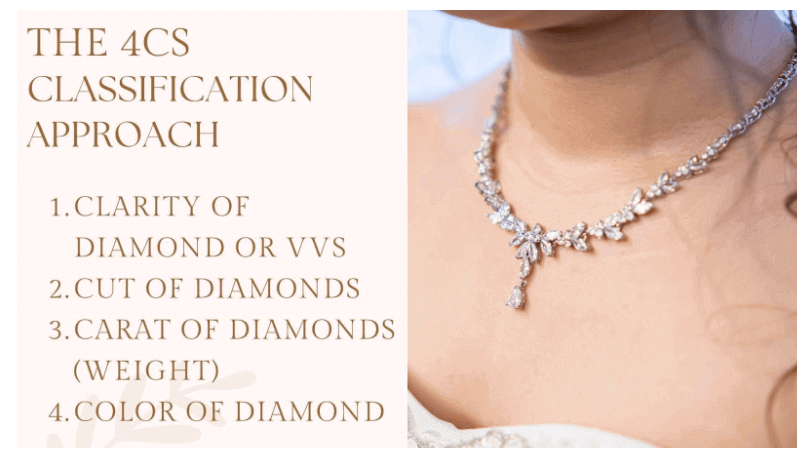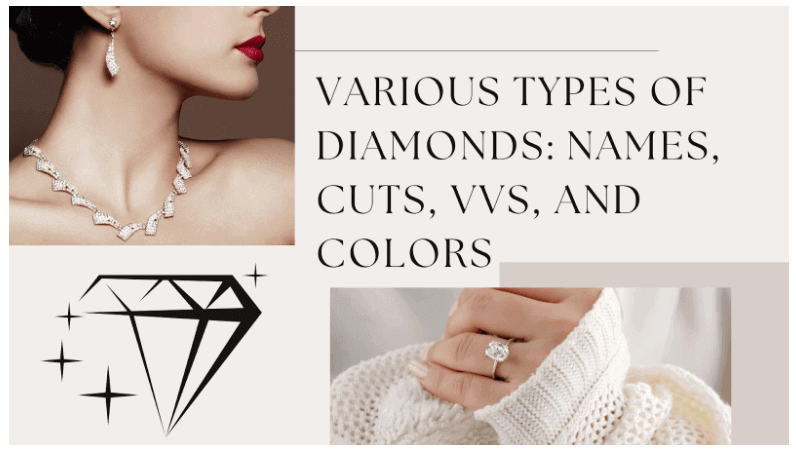Like many people, you possibly immediately think about a clear, colorless, and sparkling stone when you see the word diamond. However, there’s more to diamonds than just that and what famous jewelry brands perceive diamonds to be.
Besides the standard sparkly diamonds we all know about, there are other types of diamonds that also exist with different properties worthy of recognition. There are diamonds from different origins and diamonds that are not so clear and sparkly.
If you want to know more about them, this article delves into the various types of diamonds and their different properties. So, read on to learn these variations, so you make an informed decision when purchasing jewelry for yourself or as a gift to others.
Nominal Classification of the Various Types of Diamonds
Classification of diamonds can be done based on various approaches. Some classifications take into account the technical nature of this precious stone. Others use names, while some focus on the diamond cuts.
Nominal classification is the most common type as it is understandable to everyone. This approach uses names to categorize diamonds. Based on this approach, here are the types of diamonds:
-
Lab Created/Man Made Diamonds
As the name suggests, lab grown diamonds are made in the lab using technologies that emulate the natural creation of this precious stone under the earth. The technology and skills of creating this type of diamond help reduce the cost. You’ll, therefore, find that the products from these diamonds are cheaper.
Compared to natural diamonds, the lab grown type has similar features. The sparkle is also the same. So, unless notified, it might be hard to single out these diamonds. Their physical, chemical, and even optical properties of lab grown diamonds are similar to those of naturally occurring diamonds.
-
Natural Diamonds
Natural diamond creation happens through natural processes inside the earth. They are made from carbon and occur deep inside the earth. Once the creation process is complete, these diamonds travel to the earth’s surface. In such a state, they are simple to mine and used for manufacturing various products.
Notable properties or features of natural diamonds come in physical appearance. They are brightly sparkling and colorless. If the refining process is thorough, natural diamonds often help produce some of the most beautiful jewelry.
-
Naturally Colored Diamonds
Arguably, diamonds have colors ranging between white and brown or pale yellow. However, these are not the only colors that exist. You are more likely to find other colors that are more intense than these. These are the ones that we refer to as naturally colored diamonds.
Diamonds of more intense colors include blue, yellow, pink, red, violet, black, gray, and purple. These deep colors make them extraordinary and beautiful. For this reason, their demand has risen in recent years, despite being rare.
-
Treated Diamonds
These are natural diamonds, but with some bit of additional improvements. More precisely, they undergo some simple enhancement process to achieve desired effects. The alterations help create or add desirable features to the natural diamond.
Different enhancements exist, but the most common ones are two. These are color enhancements and inclusion filling. After doing such enhancements, the resulting treated diamonds sell cheaper than natural types.
The 4Cs Classification Approach
Another approach that most people often use in classifying diamonds is to look at some aspects popularly known as the four Cs. These Cs mainly revolve around grading attributes of various types of diamonds. Based on this approach, here are the categories:

1.Clarity of Diamond or VVS
Under this approach, the classification of diamonds relies on the clarity of any flaws and their quantity. In a way, clarity has some connection with quality and thus affects pricing. Under this approach, various types of diamonds include:
- Internally flawless (IF)
- Flawless (FL)
- Very very slightly included (VVS1 & VVS2)
- Very slightly included (VS1 & VS2)
- Slightly included (SI1, SI2)
- Included (I1, I1 & I3)
It is worth noting that diamonds graded IF in terms of clarity are the clearest and will be significantly more expensive among the rest.
2.Cut of Diamonds
In a nutshell, a cut refers to its physical properties of diamond or visible features. Under this classification approach, the features of interest in various types of diamonds include the following:
- Finish
- Polish
- Proportions
- Symmetry
Notably, these features result from the cutting process. Cutting affects some natural features of diamonds, such as brilliance, intensity, brightness, and sparkle. So, cuts of diamonds can fall into any of the following categories:
- Excellent (EX)
- Very good (VG)
- Good (G)
- Fair (F)
- Poor (P)
3.Carat of Diamonds (Weight)
Carat is a measurement of the size used when measuring precious diamonds and other valuable gemstones. One carat is equal to 200mg. So, the larger the carat, the higher the value of a diamond. If you want large ones, you will pay a higher price, and vice versa is also true.
4.Color of Diamond
Color is undoubtedly the first thing that everyone notices about diamonds. It determines many factors when choosing jewelry or other products made of diamonds. Some colors also enjoy more popularity compared to others.
Regarding the choice of color, there is no singular approach or superiority of one color over another. It is purely a matter of personal preference and taste. Note, however, that over the decades, the perfect color of a diamond is colorless, and that’s why its prices are high to date.
Other than all the nominal and 4Cs approaches, there is another way that people also often use. This method uses shapes to differentiate various types of diamonds.
Conclusion
In conclusion, various factors come into play when choosing the most appropriate diamond for you. You need to bear this in mind to understand what you select when you visit the stores near you that sell diamonds. It also applies to online shopping.
With the help of this guide, you can easily pick the best types of diamonds that meet your needs. You can choose any but bear in mind the various aspects that determine the classification. All the best!




